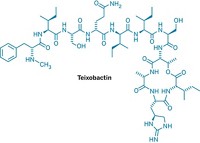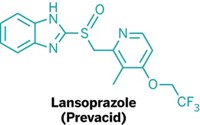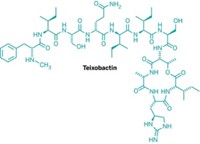Advertisement
Grab your lab coat. Let's get started
Welcome!
Welcome!
Create an account below to get 6 C&EN articles per month, receive newsletters and more - all free.
It seems this is your first time logging in online. Please enter the following information to continue.
As an ACS member you automatically get access to this site. All we need is few more details to create your reading experience.
Not you? Sign in with a different account.
Not you? Sign in with a different account.
ERROR 1
ERROR 1
ERROR 2
ERROR 2
ERROR 2
ERROR 2
ERROR 2
Password and Confirm password must match.
If you have an ACS member number, please enter it here so we can link this account to your membership. (optional)
ERROR 2
ACS values your privacy. By submitting your information, you are gaining access to C&EN and subscribing to our weekly newsletter. We use the information you provide to make your reading experience better, and we will never sell your data to third party members.
Biological Chemistry
New Front In The War Against Tuberculosis
Infectious Disease: Drug candidate hobbles ATP synthesis in the bacteria
by Puneet Kollipara
August 12, 2013
| A version of this story appeared in
Volume 91, Issue 32
Tuberculosis, which kills 1 million people around the world every year, isn’t going away. As drug-resistant strains of Mycobacteriumtuberculosis continue to evolve, scientists find themselves under pressure to develop one new TB treatment after another.
Researchers now report a promising compound that attacks drug-resistant TB in a new way—by inhibiting a cytochrome enzyme involved in the electron-transport chain for producing ATP, the molecule that stores energy in cells (Nat. Med. 2013, DOI: 10.1038/nm.3262).
Kevin Pethe of Institut Pasteur Korea and coworkers screened a library of 121,000 molecules for their ability to inhibit M. tuberculosis growth in the macrophage immune cells of infected mice. One compound stood out—an imidazopyridine amide (IPA) whose structure the researchers further tweaked to improve its potency.
The modified compound, Q203, curbed growth of a reference TB strain in lab cultures and sharply cut the fraction of infected macrophages. The same trend occurred in cultures with drug-resistant strains. In mice, Q203 also had good potency against the reference strain, Pethe says, without showing signs of toxicity.
Traditional TB drugs attack the bacterium’s cell wall or target RNA synthesis. To determine Q203’s bioactivity mechanism, Pethe and colleagues used bacterial genomics studies to show that Q203 fights TB by targeting the cytochrome in ATP synthesis. Bedaquiline, a newly approved TB drug, also strangles ATP production, but it does so by targeting another enzyme, ATP synthase.
To become a TB treatment, Q203 must be subjected to human clinical trials. But even if it fails, the findings hint at ATP synthesis as a promising drug target, Pethe says. Among the molecules that may follow that mechanism are other IPAs, which are simple and inexpensive to synthesize, he says.
“There’s a long way to go, as with all drug development, but I think it’s a pretty exciting lead,” says Marvin J. Miller, a University of Notre Dame synthetic organic chemist who conducts disease-related IPA research. “A number of groups are already expressing strong interest.”






Join the conversation
Contact the reporter
Submit a Letter to the Editor for publication
Engage with us on Twitter